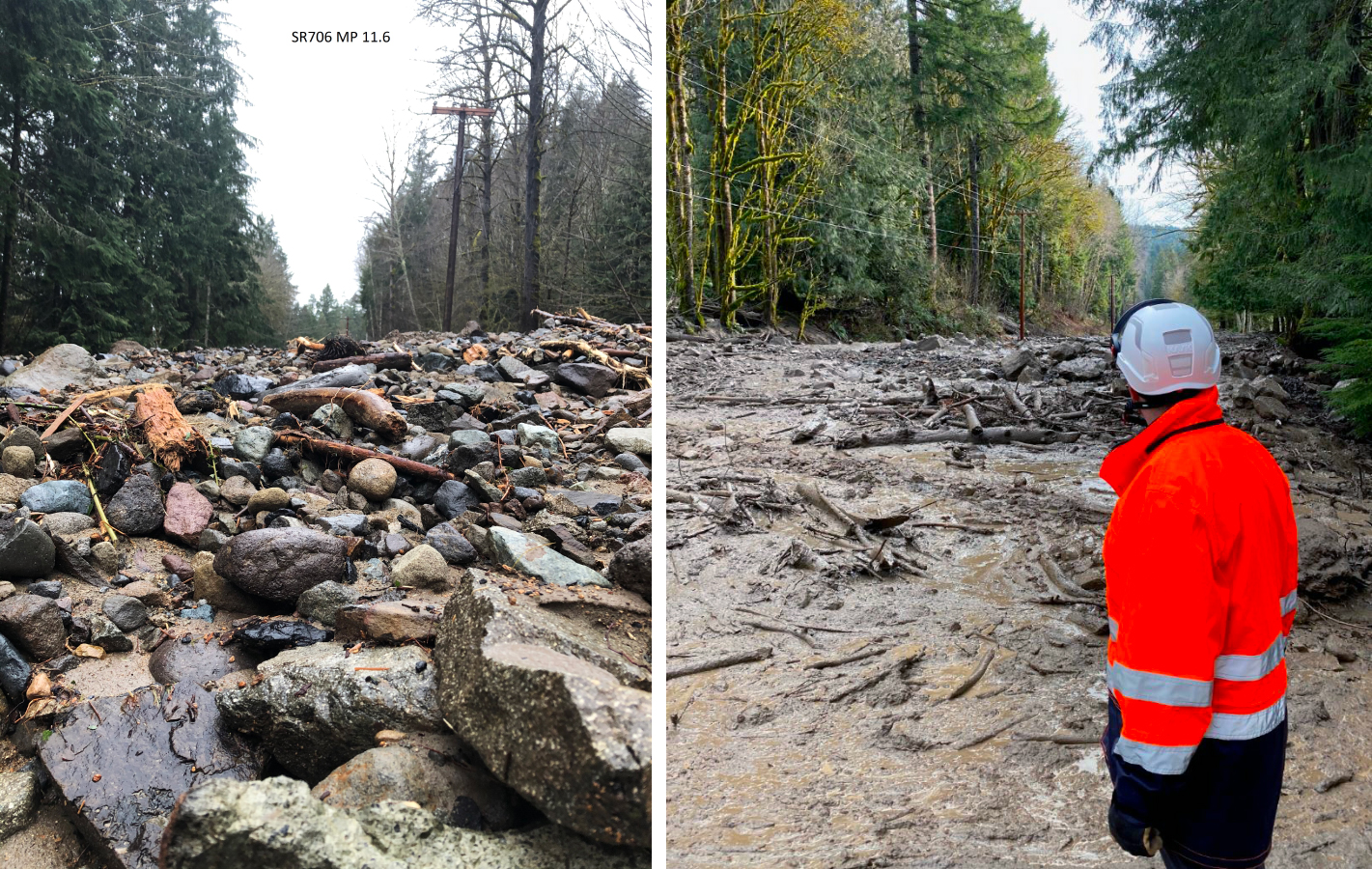Washington State’s first National Park, which encompasses the state’s tallest peak and one of its most enduring symbols, Mount Rainier, has become totally inaccessible due to flooding and mudslides that have blocked roads leading to all of its entrances, including the famous Road to Paradise:
Crews are working to remove debris from landslides covering all roads to Mount Rainier National Park, but it’s unclear when access to the park will be available.
Both state Route 410 near Greenwater and Route 706 in Ashford closed Thursday after relentless rains triggered several slides.
The weekend brought progress to the work on Route 410.
Three of four landslides were cleared from a 20-mile stretch, with crews working overnight to remove trees, mud and other debris that spilled across all lanes, according to the Washington State Department of Transportation.
Although locals were granted access Sunday evening, a one-mile closure remains between Mud Mountain Road and Greenwater.
And that’s not all. Not only are the two main highways leading into the park closed, but there is also “no access to Carbon River in the northwest corner of the park due to a washout of Fairfax Forest Reserve Road E. between Mowich Lake Road and Manley Moore Road on route to the Carbon River Ranger Station,” the National Park Service reports in its Road Status report.
As a consequence, it is not possible to visit the park right now.
The park’s other entrances are all closed for the winter, including the portions of State Route 410 that wind through Chinook and Cayuse Passes.
While WSDOT is doing its best to get State Route 410 cleaned up so that Crystal Mountain Ski Resort can reopen, State Route 706 is in such bad shape that work cannot even be undertaken to clear the debris right now. WSDOT explains:
Many travelers who visit Mount Rainier National Park often refer to State Route 706 east of Ashford as “the road to Paradise.”
But after several days of torrential rain, the road to Paradise now resembles a muddy creek bed complete with large boulders, six-foot deep debris and several streams in areas where they shouldn’t be. In short, the roadway is a mess and the hillside above is extremely unstable. That means the road, which first closed due to slides at 4 AM on February 6th, will remain closed with no timeframe for reopening.
While we know keeping the highway closed is frustrating to residents and backcountry adventurers seeking the tranquility of one of our state’s most notable landmarks, until water from the displaced streams is redirected, we can’t reopen the highway.
Besides the damage to State Route 706, there’s also damage to park roads and structures, including at Park Headquarters in the Longmire Historic District:
Continued flooding within park boundaries was causing damage to roads, trails, and historic structures, including the National Park Inn at Longmire and other nationally-significant buildings within the Longmire National Historic Landmark District. Several buildings in Longmire had lost critical systems as sump pumps have been unable to keep up with water intrusion, the park reported.
Crews are were evaluating road and drainage system damage between the Nisqually entrance and Longmire; however, continuing precipitation was hampering crew progress.
Initial indications are that the park’s main entrance road had sustained some damage near Sunshine Point (where a catastrophic flood washed out the entrance road in 2006).
There is an emergency route into Longmire that is being used by park officials to resupply the essential personnel staying there, but this route cannot be used by the public. It will be some time before Mount Rainier can accept visitors again.

